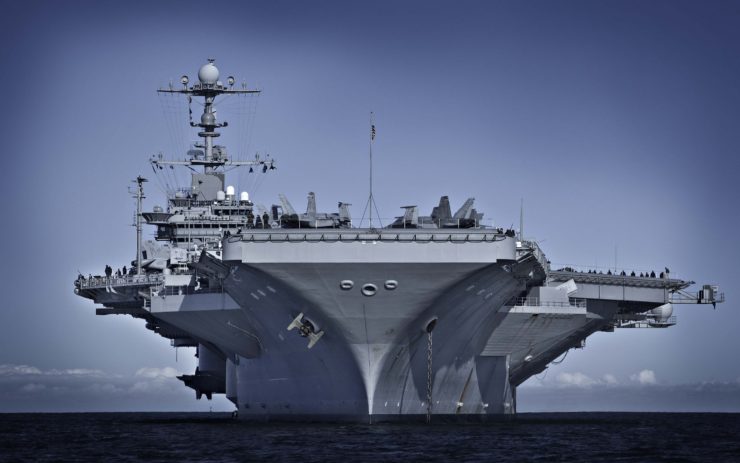
In the run-up to the 15th BRICS summit in South Africa, the Chief of the South African Navy, Vice Admiral Monde Lobese, told a gathering of BRICS naval brass of his country’s excitement over the current reshaping of the geopolitical landscape.
Visiting Russia’s annual Navy Day parade in St. Petersburg, Admiral Lobese joined heads of state from the Republic of Congo, Mali, Eritrea, and Burkina Faso, who had just attended the Russia-Africa Summit last month.
The parade, attended by 33 ships, four submarines, eight sailing vessels, and over 3,000 military personnel, annually celebrates the naval victory over Sweden in the 1714 Battle of Gangut. Lobese was also joined by other fleet admirals from BRICS countries (Brazil, Russia, India, China, and South Africa). Speaking at a gala dinner, South Africa’s head of naval operations said this about the BRICS commitment to reverse the power and effects of neocolonialism.
“We as South Africans are very excited of the new geopolitical landscape that will be shaped by this gathering of people. This geopolitical landscape will see the world take a stance against imperialism, and against those countries who believe that they can dictate how other countries must behave on the world stage.”
He said South Africans intend to build bridges of cooperation with every nation that shares the positions the BRICS have taken. He said the critical facets of this new movement will be based on inclusivity, mutual trust, mutual agreement, and partnership and that the participants will not require the permission of any country to engage in this new multipolar grouping.
Most interesting, however, was a meeting on the sidelines between South Africa’s top naval commander and Iran’s Rear-Admiral Shahram Irani. The Iranian NavyNavy recently sent an 86-ship flotilla of warships to South Africa, and Iran invited South Africa to participate in joint exercises offshore of his country.
South Africa’s small fleet is one of the most efficient and powerful on the African continent. The recent addition of four Meko A200SANs, the Valour class frigates, gave the country the most powerful surface combatants in sub-Saharan Africa. SA’s Navy has participated in numerous joint exercises, including Exercises Ibsamar (India and Brazil) and Excercise Mosi(with Russia and China).
What makes this news most interesting is the combined weight of naval power the BRICS nations can wield against any adversary. Forgetting for the moment Russia’s ballistic missile submarines, the modern South African ships, combined with Iran’s growing and upgraded fleet, China’s substantial naval building program, and especially India’s formidable naval capability, the multipolar order seems fit to mix it up with even the United State’s huge fleet. Having cut their military budgets for ships to almost nothing in the past decades, Great Britain has left NATO and the Western Alliance relying on America’s and France’s formidable but aging Navies. As for the Germans, their fleet is barely worth mentioning, even with recent funding for new multi-purpose ships. This UK Defense Journal story from 2018 questioned whether or not the Deutsche Marine could be salvaged at all.
President Cyril Ramaphosa has made it abundantly clear that South Africa would not be drawn “into a contest between global powers” over Ukraine. He said this despite what he called “extraordinary pressure” from the Western bloc to pick sides. These BRICS, and the nations desiring entry into the cooperative, see the writing on the wall where the American hegemony’s future capabilities are. It would be interesting to witness war games based on the BRICS capabilities versus the fading military capacity of the West.
Phil Butler, is a policy investigator and analyst, a political scientist and expert on Eastern Europe, he’s an author of the recent bestseller “Putin’s Praetorians” and other books. He writes exclusively for the online magazine “New Eastern Outlook”.
